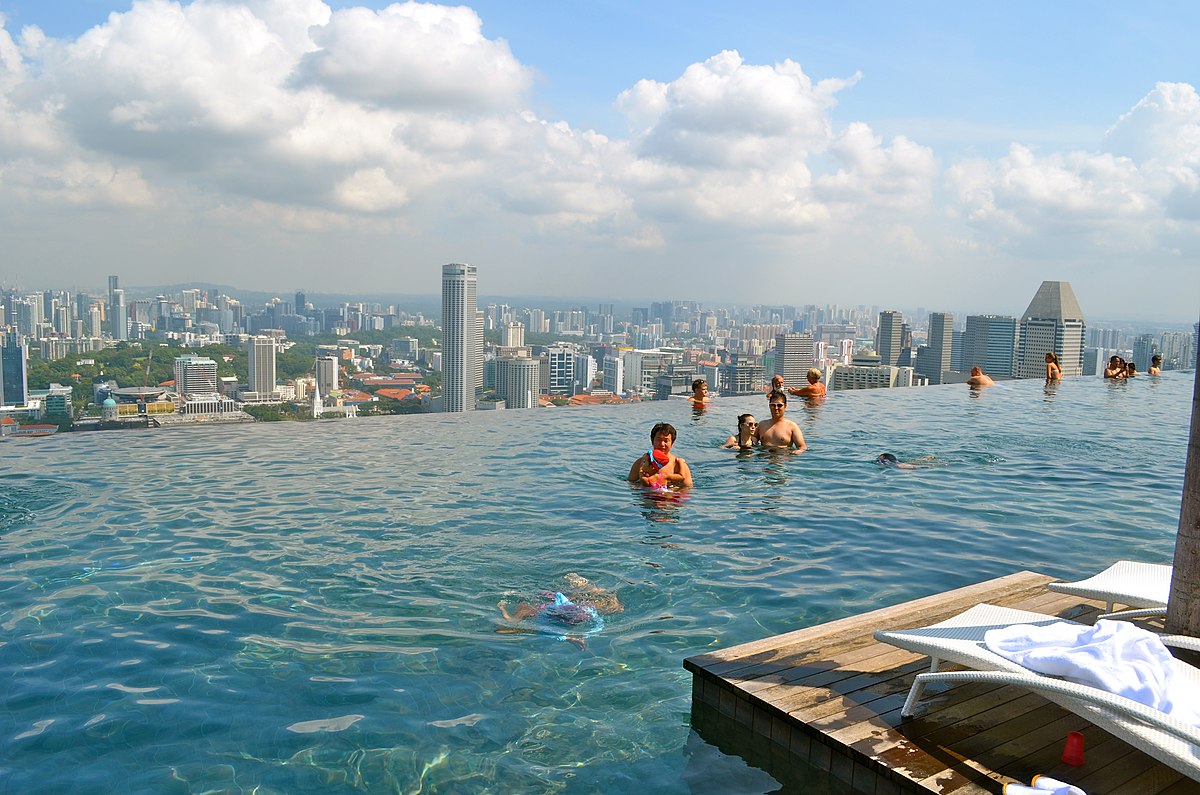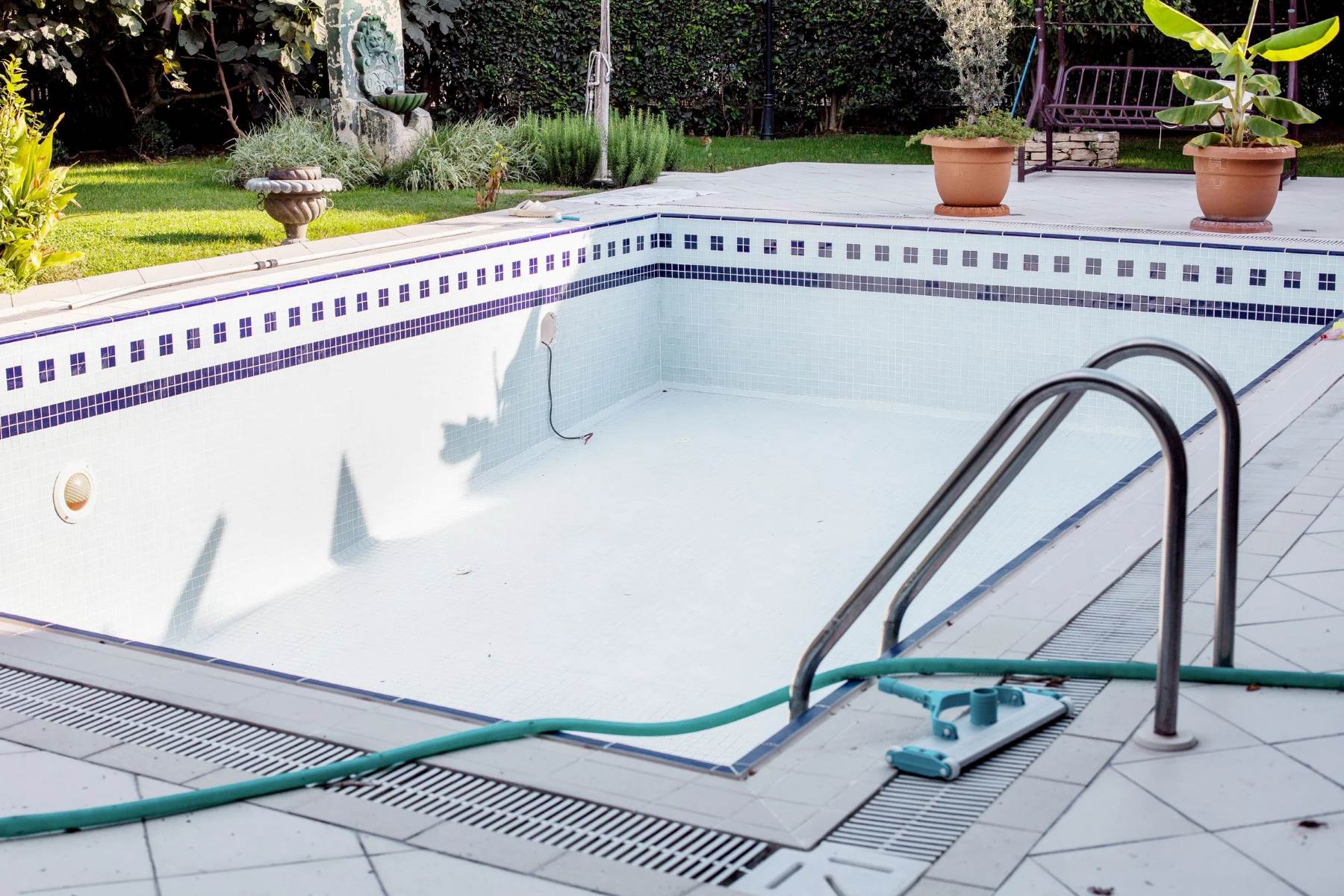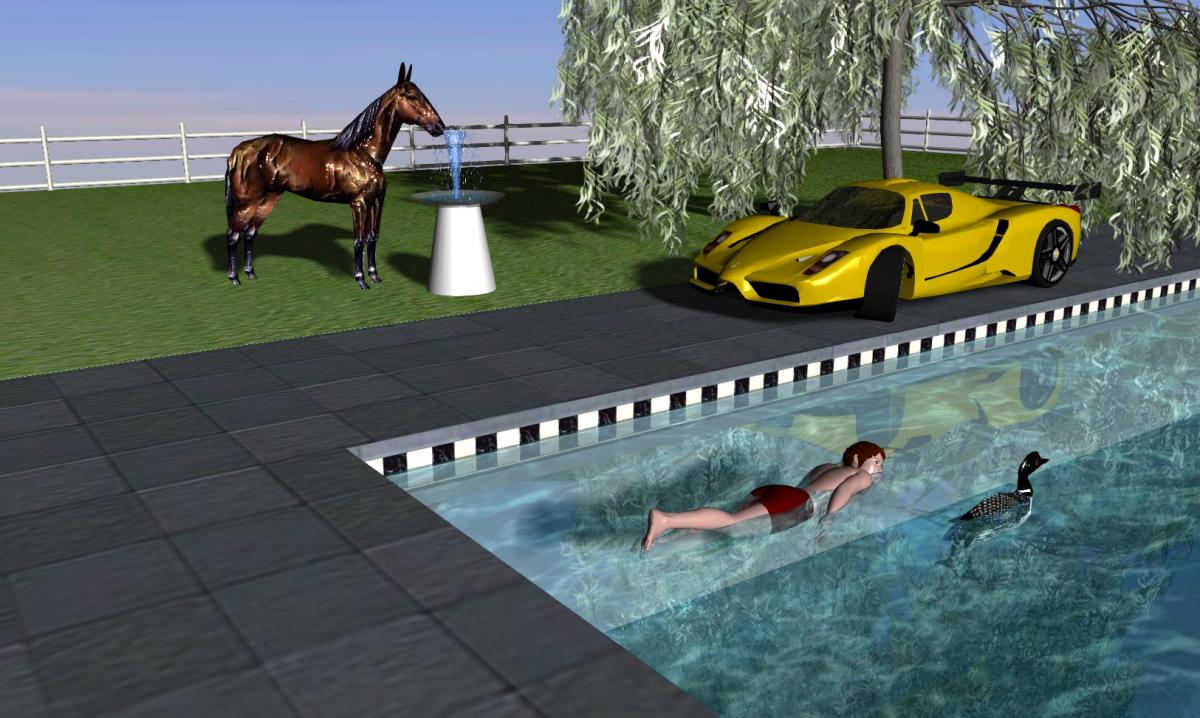Home>Ideas and Tips>Natural Swimming Pool Construction Eco-Friendly Backyard Oasis


Ideas and Tips
Natural Swimming Pool Construction Eco-Friendly Backyard Oasis
Modified: November 2, 2024
Discover how to build a natural swimming pool for an eco-friendly backyard oasis. Enjoy chemical-free swimming with low maintenance and stunning aesthetics.
(Many of the links in this article redirect to a specific reviewed product. Your purchase of these products through affiliate links helps to generate commission for Storables.com, at no extra cost. Learn more)
In recent years, the trend towards eco-friendly and sustainable living has led to a significant increase in the popularity of natural swimming pools. These pools offer a unique blend of functionality and environmental responsibility, providing a chemical-free swimming experience that is both aesthetically pleasing and beneficial for the ecosystem. In this article, we will delve into the world of natural swimming pools, exploring their construction, maintenance, and benefits.
Natural swimming pools are designed to mimic the natural environment, using biological filters and plant life to purify the water instead of relying on chemicals. Unlike traditional pools, which often require a plethora of chemicals to maintain clean and safe water, natural pools rely on the natural processes of plants and microorganisms to keep the water clean and clear.
The core principle behind natural swimming pools is the separation of the swimming area from the filtration area. This separation allows for the creation of a "regeneration zone" where plants and microorganisms work together to purify the water. The regeneration zone typically includes a variety of aquatic plants such as water lilies, reeds, and cattails. These plants absorb phosphates and other nutrients from the water, promoting the growth of beneficial bacteria that consume algae and other harmful organisms.
The filtration process in natural pools is primarily biological. Water from the swimming area circulates through the plant zone, where it passes through the fibrous root structure of the plants. This process removes contaminants and excess nutrients from the water, effectively eliminating the need for chlorine or other chemical sanitizers.
Natural swimming pools can be constructed in various shapes and sizes, ranging from small backyard pools to large, elaborate systems. They can be built from scratch or converted from existing in-ground pools. The materials used for construction are often more natural and less invasive than those used in traditional pools, such as gravel, stone, and clay instead of concrete or fiberglass.
For those who prefer a more hands-on approach, DIY natural swimming pools are a viable option. These pools can be constructed with minimal materials and without the need for extensive professional help. The process involves digging a hole in the ground with sloping sides to prevent soil collapse and then lining it with natural materials like gravel or stone. Aquatic plants are then introduced to the pool to begin the filtration process.
While DIY projects can be rewarding, professional installation often provides a more polished and durable result. Companies specializing in natural swimming pools work closely with clients to design a system that meets their specific needs and integrates seamlessly with the surrounding environment. These professionals consider factors such as climate, land size, and personal preferences to create a customized natural oasis.
Natural swimming pools offer numerous benefits over traditional chlorinated pools:
Chemical-Free Swimming
One of the most significant advantages of natural swimming pools is the absence of chemicals. Chlorine and other sanitizers used in traditional pools can be harmful to human health and the environment. Natural pools eliminate this risk by relying on biological processes to keep the water clean.
Low Maintenance
Maintenance for natural swimming pools is significantly lower compared to traditional pools. The biological filtration system requires only occasional pruning of plants and skimming of the surface to remove organic materials. This minimal maintenance makes natural pools ideal for busy homeowners who want to enjoy their pool without constant upkeep.
Ecological Diversity
Natural swimming pools support a diverse range of aquatic life, including frogs, dragonflies, and other invertebrates. The shallow plant zones provide habitat for these creatures, which help in controlling mosquito populations by eating larvae.
Aesthetic Appeal
Natural swimming pools blend seamlessly into their surroundings, creating a visually stunning backyard oasis. The use of natural materials like stone and gravel gives these pools a unique aesthetic that complements any landscape design.
Cost-Effective
While the initial cost of constructing a natural swimming pool can be higher than that of a traditional pool, the long-term savings are substantial. Natural pools do not require the frequent replacement of liners or the purchase of chemicals, making them a cost-effective option in the long run.
Designing a natural swimming pool involves several key considerations:
Zoning Your Pool
To ensure effective filtration and maintenance, it is crucial to separate the swimming area from the filtration area. Reserving at least 50% of the pool's surface area for shallow plants eliminates the need for chlorine and expensive filters and pumps. The shallow plant zone should be designed to slope gradually, allowing water to flow gently through the plant roots.
Plant Selection
The choice of plants is critical in maintaining a healthy and clean natural swimming pool. Plants can be classified into three categories within the natural pool environment: emergent, deep water-rooted, and floating plants. Commonly used plants include water lilies, reeds like Sparganium, cattails, pond sedge, and swamp hibiscus.
Pool Size and Depth
The size and depth of the pool depend on several factors including land availability, personal preference, and climate. A minimum pool size recommendation ranges from 10 to 20 feet in diameter, with a depth that allows for both shallow plant zones and deeper areas for swimming.
Filtration Systems
Natural pools rely on biological filters such as natural shale or gravel to absorb phosphates and promote beneficial bacteria growth. A regeneration zone with plant life is essential for circulating water through the plant roots for filtration. In warmer climates, hydroponic plants can be installed within the pool itself to enhance filtration.
Maintaining a natural swimming pool is more akin to gardening than traditional pool maintenance. Here are some essential tips:
Pruning Plants
Regular pruning of plants helps maintain their health and ensures they continue to filter the water effectively. Prune plants during the growing season to promote new growth.
Skimming Surface
Use a skimmer net to remove organic materials from the surface of the water. This prevents the accumulation of debris that could harm aquatic life.
Covering Pond Surface
Covering the pond surface with a net during winter months prevents leaves and debris from accumulating in the pool. This also helps prevent ice from forming on top of the water, which could damage plants.
Dismantling Filtration Systems
Before winter sets in, dismantle and drain filtration systems to prevent damage from freezing temperatures.
Like any swimming pool, natural pools pose potential safety hazards. Ensure that your pool is properly fenced according to local safety regulations. This is particularly important if you have children or pets who may accidentally fall into the pool.
While DIY projects can be rewarding for those who enjoy hands-on work, professional installation often provides a more polished result. Professionals have extensive experience in designing and constructing natural swimming pools that meet specific needs while ensuring durability and longevity.
Micky's journey to building his 500,000-gallon backyard pool is an inspiring example of dedication and creativity. Over 29 years, Micky transformed his backyard into an ultimate oasis by first using a plastic liner, then a rubber one, and finally spray-on concrete. His pool features an impressive filtration system using well-strainer casing with slits that allow water to pass through while keeping sand out. The system includes a regeneration zone with plant life that circulates water through its roots for filtration.
Micky's pool has become a beloved gathering spot for family and friends. The pool's size allows for multiple swimmers at once, making it an ideal spot for social gatherings like ball teams or scout troops. Despite its massive size, Micky's pool remains a testament to sustainable living by relying on natural processes for filtration rather than chemicals.
Natural swimming pools offer a unique blend of functionality and environmental responsibility. By mimicking natural processes and using biological filters along with aquatic plants, these pools provide a chemical-free swimming experience that is both aesthetically pleasing and beneficial for the ecosystem. Whether you choose to build one yourself or hire professionals for installation, creating an eco-friendly backyard oasis through natural swimming pools is an excellent way to enhance your living space while contributing positively to the environment.
References
- "500k Gallon Backyard Pool – Coolest Thing I've Ever Made – EP26" by Micky (YouTube)
- "Everything You Need to Know About Natural Swimming Pools" by HGTV
- "How to Build a Natural Swimming Pool" by Mother Earth News
- "Natural Swimming Pools – DIY or Pro Building Tips" by Ecohome
- "Natural Swimming Pool Design: Eco-Friendly Oasis" by Reflections Water Gardens
By embracing this sustainable approach to backyard design, you can create an idyllic water oasis that not only enhances your living space but also contributes positively to the environment.
Was this page helpful?
At Storables.com, we guarantee accurate and reliable information. Our content, validated by Expert Board Contributors, is crafted following stringent Editorial Policies. We're committed to providing you with well-researched, expert-backed insights for all your informational needs.

















0 thoughts on “Natural Swimming Pool Construction Eco-Friendly Backyard Oasis”